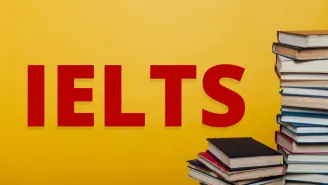Flying Tortoises Reading Answers
Flying Tortoises Reading Answers
A. An airborne reintroduction program has supported conservationists to take important measures to save the endangered Galapagos tortoise.
B. Spiny cacti forests cover the most uneven volcanic plains that divide the interior of Isabella's Galapagos Island from the Pacific Ocean. With its five different volcanoes, the island and lunar landscape are similar. Only the dense vegetation in the skirt of the peak-covered peak of the Sierra Negra rests from the barren landscape below.
C. This unfriendly environment is house to the huge Galapagos tortoise. About five million years after the birth of the Galapagos, the islands were occupied by one or more turtles off the mainland of South America. As these ancestral turtles settled on separate islands, distinct peoples developed at least 14 different subspecies to suit their unique environments. Island life agreed with them. Without important predators, they grew into the biggest and longest turtles on the planet, weighing more than 400 kilograms, sometimes 1.8 meters long, and living for over a century.
D. In passage Flying Tortoises Reading Answers, Before humans arrived, the archipelago had millions of turtles. From the 17th century, pirates took some for food, but with the arrival of whale ships in the 1790s, this exploitation increased exponentially. The turtles, relatively unmoving and capable of surviving for months without food or water, were transported on these ships to serve as food items during lengthy sea journeys. Sometimes, their bodies were processed into top-quality oil.
E. In total, 200,000 animals were taken from the archipelago before the 20th century. This recorded exploitation then intensified when immigrants arrived on the islands. They hunted turtles and killed their habitat to empty the land for agriculture. They also introduced alien species that could hunt or lay eggs and hurt or kill their habitat, ranging from livestock, pigs, goats, rats, and dogs to plants and ants.
F. Today, only 11 subspecies survive, many of which are highly endangered. In 1989, work started on a turtle breeding center outside the city of Puerto Villamil in Isabela, dedicated to saving the island's turtle population. The centre's captive breeding program proved to be very successful, and it finally had to deal with a large population issue.
G. The issue was also stressful. Captive turtles cannot be reintroduced into the wild until they are at least five years old and weigh at least 4.5 kilograms, at which time their size and weight and toughened shells can save them from predators. But if people wait too long after that, the turtles will ultimately become too big to carry.
H. According to passage Flying Tortoises Reading Answers, For many years, on long, treacherous walks on narrow paths, turtles were carried in small numbers, carried on the backs of males. But in November 2010, Godfrey Merlin, an environmentalist and liaison officer for Galapagos National Park, and the visiting private motorboat captain and helicopter pilot assembled around a table in a small cafe on the island of Santa Cruz in Puerto Ayora to perform a more ambitious reintroduction. The purpose was to transport the 300 turtles from the breeding centre to different places near the Sierra Negra by helicopter.
I. In passage Flying Tortoises Reading Answers, The owners made this remarkable action of the 67-meter White Cloud boat, who used the helicopter and its professional pilot and boat, as well as the logistics help of its captain and crew, for free to Galapagos National Park. First, an air ambulance, the boat's helicopter has a rear dual door and a big interior space very appropriate for cargo, so a custom crate is created to hold 33 turtles with a total weight of 150 kilograms. With this weight, fuel, pilot, and four crew, the helicopter's full payload was approaching, and there were times when it was undoubtedly on the border of the helicopter's capacities. For three days, a team of volunteers from the breeding centre worked 24 hours a day to prepare young turtles for transport. At the same time, park keepers landed prematurely in remote locations and removed landing sites with dense brush, cacti, and volcanic rocks.
J. Once they are released, the young turtles quickly spread to their ancestral territory, exploring their new environment and eating the plants. Finally, a small tortoise saw a full-grown giant who had been cutting down a tree for a hundred years around the island. The two stood side by side, a strong sign of the regeneration of an ancient race.
Flying Tortoises Reading Questions & Answers
Discover Flying Tortoises IELTS reading answers






